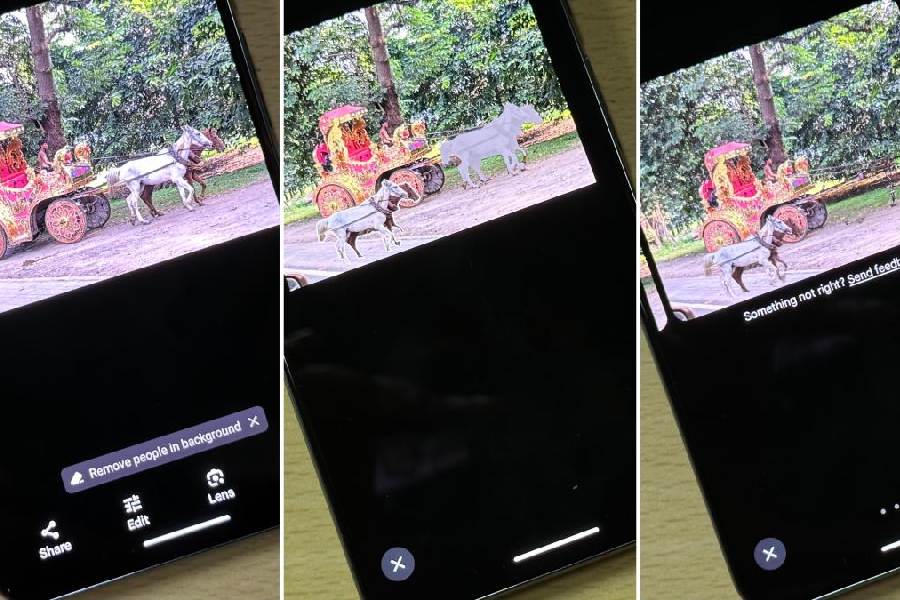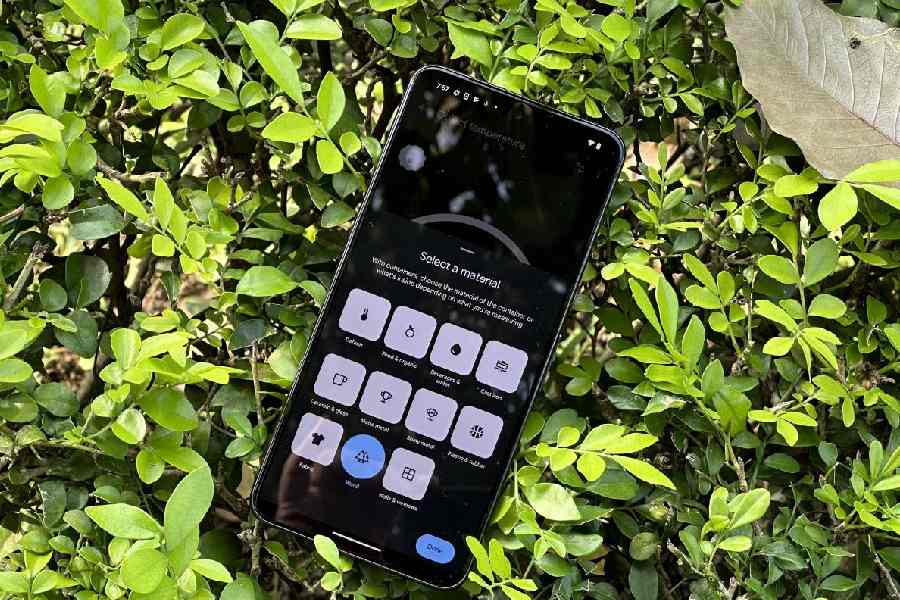Harry Houdini was possibly the greatest showman of all time. What made him successful? He could “perform wonders” in a world that’s always hungry for “wonders”. Now think of Google and its AI capabilities. Even though OpenAI made a good start with ChatGPT, the conversation is turning back to Google, which has been playing with AI for years and has made massive investments. Further, Google is more careful about what features to put out in the market.
This brings us to the new Google Pixel phones — Pixel 8 and Pixel 8 Pro. If Apple has kept the conversation around health, privacy and camera, Google has taken the conversation into AI land. Many of the new features on the Pixel 8 Pro (the review of Pixel 8 is coming up) are surprisingly good, to the point I wonder if companies like Xiaomi and OnePlus would be able to catch up.
After using the phone for a few days, here are some AI tricks I am finding helpful (and scary). Plus, I am spending/wasting a lot of time using a new sensor on the phone.

Magic Editor is an editing experience that uses AI to help reimagine your photos. In the photo, we ‘moved’ the horses and AI filled out the space where the horses were originally seen
Temperature sensor is not a gimmick
It is one of the hallmark features of Google Pixel 8 Pro as it involves a completely new sensor. Located below the flashlight on the camera band on the rear of the phone, it works with the Thermometer app.
Load the app and at the bottom of the screen you will find a button that reads ‘default’. Tap on it to select a material, which can be food, beverage, cast iron, ceramic, glass, matte metal, shiny metal, plastic, rubber, fabric, wood, walls and windows. For example, I wanted to measure the temperature of a wooden bench in a park (sure, it’s a weird thing to do) and I selected ‘wood’. Or consider measuring the temperature of baby milk before it is served.

The Thermometer app works with the new temperature sensor
The sensor has to be within five centimetres of the object to get an accurate reading. Each time it appeared to work correctly. Currently, you cannot measure skin temperature, which needs Food and Drug Administration (FDA) clearance in the US. But it simply shows that Google is thinking out of the box to keep smartphones interesting.
To be fair, several companies use infrared temperature sensors built into smartwatches to track sleep and predict menstrual cycle but brands are careful when it comes to body temperature. If FDA clearance comes through (it can take a while), there is immense potential.
Is it real?
Suddenly, Google has made megapixels just another thing on the spec sheet while focusing on what is achievable by employing AI.
There’s a 50MP main camera sensor with f/1.68 aperture. The Pro’s 5x telephoto module is attached to a 48MP camera with excellent autofocus, and there’s a new higher-res 48MP sensor in the ultrawide camera, which can now focus as close as two centimetres in macro mode. On the front, is a 10.5MP camera with autofocus. Plus, the Pixel 8 Pro comes with some pro camera controls to help adjust focus, shutter speed, which lens is being used, and access 50MP JPEG or RAW shooting from the native camera app. These are technical details.

The 5x zoom works well on the main camera
Now, the interesting bits and pieces. The feature that many will use and demand from other phones is Best Take. The feature is not about generating new facial expressions. There are moments when the grandmother decides to blink and blink… and blink. Best Take uses an on-device face detection algorithm to match up a face across six photos taken within seconds of each other. You can have a photo where nobody is blinking. It creates the perfect instance of a photo from a burst of photos.
The other big feature that is available only on Pixel 8 Pro is Video Boost (coming soon). Suppose you are shooting a video in low light or if it’s a moment that involves a lot of action. A copy of the video (4K@30fps) can be sent to Google’s Cloud for processing, which can improve stabilization and clarity while reducing noise. The improved clip is then sent back to your device. The time to process depends on the length of the video. I have seen the demo and the results are astonishing.
Staying on with video is Audio Magic Eraser. You already know about the Magic Eraser, which removes stuff from a photo that you don’t want, like a photobomber. With the Pixel 8 series you can eliminate unwanted sounds, like that of the wind while you are filming a busker playing the guitar. The feature is available on Pixel 8 phones but you can use the feature to remove unwanted noises from any video saved on your phone.

A photo taken using the main camera of the Pixel 8 Pro. It’s full of details
Another head-turner of a feature is Magic Editor, which takes the Magic Eraser forward. To use Magic Editor on a photo, I needed to first make a backup. Next click on the photo, select the part you want shifted to a different part in a picture. I have a picture of two horses pulling a carriage. I “made” the horses move to wait next to the carriage and the scene from where the horses have been moved out, gets automatically recreated by Google. It’s magic.
Also present is Zoom Enhance, which I haven’t been able to try on the review device but it’s coming later this year. With some Samsung phones, the 100x zoom is great but at 100x, photos can be blurry. When you pinch in, Zoom Enhance can intelligently sharpen and enhance the details of your images. The resulting image will be sharper. Further, users will have control over the sharpening process.
All the magic has been made possible by Google’s own Tensor G3 processor. If Apple’s chipsets are about boosting devices to work faster than those from rival companies, Google is ensuring its chipset can handle AI like no other. Both the new Pixel phones will do way more machine learning on device compared to, say, the Pixel 6. It’s useless to get into the number of cores and GPU details because these are among the best in the market. Both Apple and Google have gone beyond boring customers with numbers. Forget percentages because it’s the real-world experience that matters. We are reaching a point where one will ask: “Is it real?”
Flat display
Both Pixel phones have flat displays, which makes working on the device easier for long hours. The Pixel 8 and Pixel 8 Pro are around the same size as last year’s phones but the Pixel 8 screen is slightly smaller at 6.2 inches compared to its predecessor’s 6.3-inch screen while the Pixel 8 Pro still has a 6.7-inch display. The screens are also brighter this time, which means they should be easier to see in direct sunlight.
The matte back of the Pixel 8 Pro Series ensures there are no fingerprints being left behind. It feels silky smooth to the touch.
Android seven times over
Probably the biggest “feature” of the new phones is seven years of OS security and feature drop updates. That’s a very long time and I wonder if the chip would be able to take new AI features that come out four-five years down the line. But yes, Google has set a new standard. Can other Android companies follow? Such long-term support have a lot to do with chip manufacturers and in the case of Pixel, it’s running on Google’s own chip.
Should you buy it?
There’s no doubt that Google Pixel 8 Pro is the most promising Android phone you can buy at the moment. The only issue I have with Pixel 8 Pro is fewer storage options available in India. Of course, there is always access to Google One to get out of tight spaces. Otherwise, Google Pixel 8 Pro can perform Houdini-level magic. Whether AI is good or bad, is another debate. For the moment, this is the most powerful AI-focused device that can be in your pocket.
At a glance
Device: Google Pixel 8 Pro
Price: Rs 106,999
High notes
Best AI-driven tools on a phone
Excellent photography capabilities
Long-term Android promise
Temperature sensor can be a trendsetter
Muffled note
More changes on the camera hardware side would have been welcome










